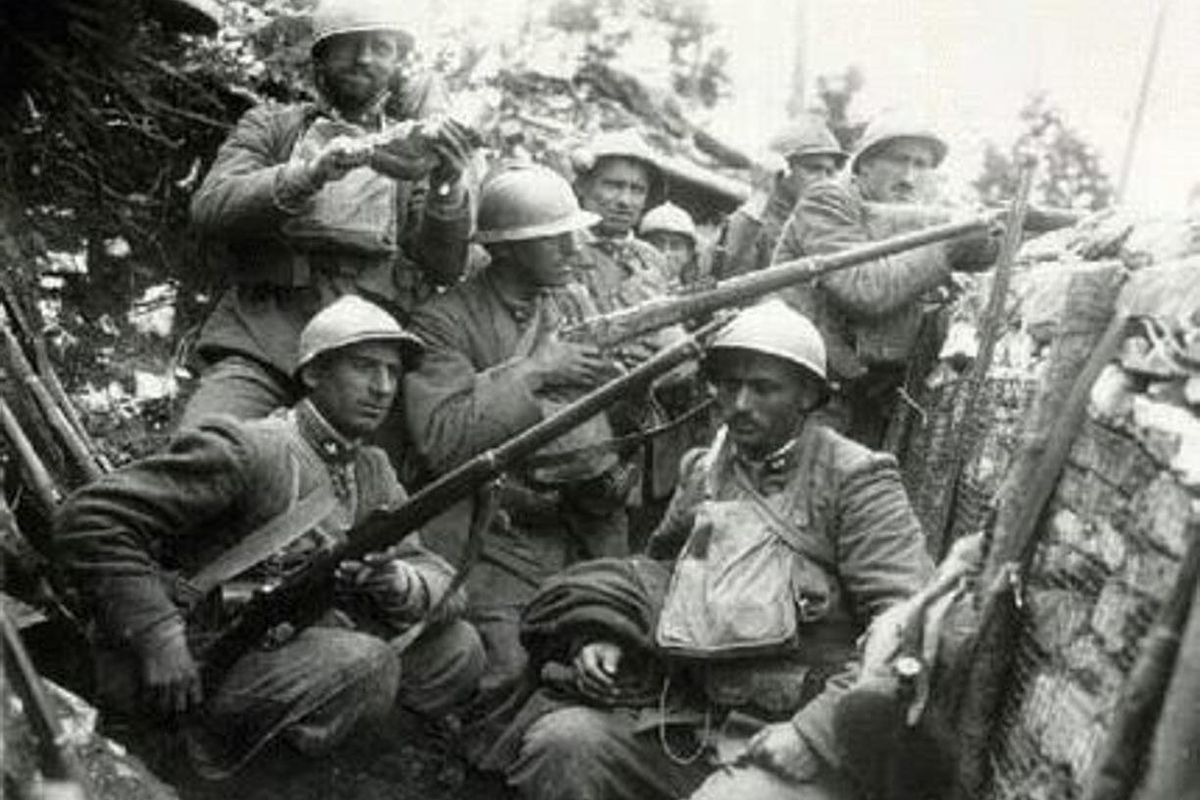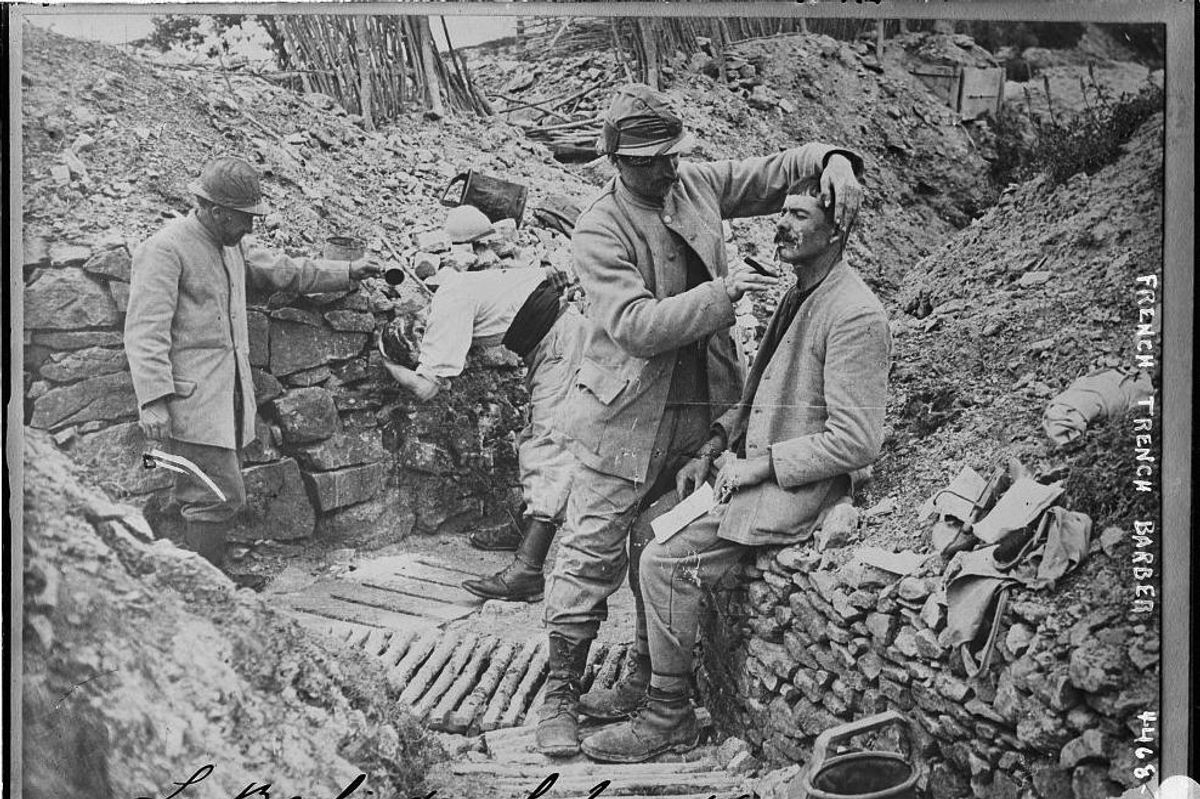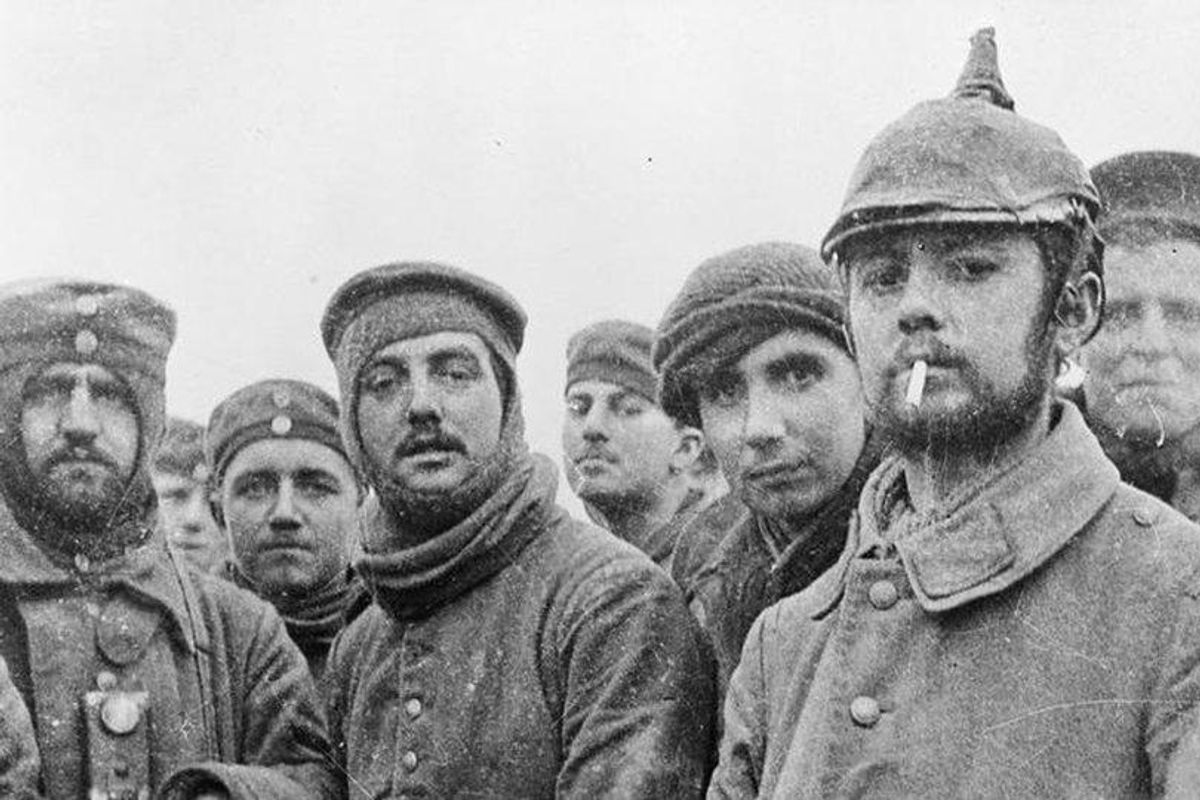How two enemy soldiers during WWI ended up celebrating Christmas Eve 1914 together.
The region between the men, past the barbed wire, was known as "no man's land," and it's where some of them met as humans rather than as enemies.

Italian soldiers in trench, 1918
Trench warfare in World War I was brutal.
In 1914, the western front of the war had trenches where French and English soldiers awaited the next attack from the Germans (or vice versa) or simply wallowed in the frost and mud, biding time.
They were very close to each other in some areas — 60 to 80 yards, less than the length of a football field.
So close that the soldiers could hear each other cough.
And sing.

A barber in a French trench during World War I.
Image by Bain News Service via Library of Congress.
The region between the men, past the barbed wire, was known as "no man's land," and it's where some of them met as humans rather than as enemies.
Early on in the war, there was some fraternization between the enemy lines, with soldiers from England and France meeting their enemies from Germany. They exchanged cigarettes, chocolate, and even whisky, learning more words of other languages from each other, sometimes tossing verbal jabs back and forth.
Eventually, some agreed to leave each other alone to get out of the trenches and exercise in the morning rather than shoot at each other.
Or to let each other have a breakfast without worrying about being shot at.
There were widespread calls for peace that holiday season, with even Pope Benedict XV on Dec. 7, 1914, asking for a Christmas truce, so "that the guns may fall silent at least upon the night the angels sang."
Though Germany agreed to this, the other countries refused.

Der Weihnachtsfriede von 1914 (The Christmas Peace of 1914).
Image via Imperial War Museums/Wikimedia Commons.
On Christmas Eve that year, what started off on some parts of the front lines as a temporary truce to collect and bury the dead eventually became an exchange between French and German troops of newspapers, cigarettes, and song.
Soon, many of the German soldiers put up tiny Christmas trees on the edges of their trenches — gifts from home — and lit them with candles.
Carols began to ring out, "O Tannenbaum" from the German side, which of course was "Oh, Christmas Tree" for the English. "Adeste Fideles" ("Oh Come, All Ye Faithful") followed.

The Illustrated London News's image of the Christmas Truce: "British and German Soldiers Arm-in-Arm Exchanging Headgear: A Christmas Truce between Opposing Trenches."
Image via The Illustrated London News/Wikimedia Commons.
Thereafter referred to as "The Christmas Truce," it spread to many sections of the western front and came to symbolize the concept that many soldiers had that this war was not something they'd chosen to fight in and that these men were not people they really wanted to shoot at and would perhaps rather be celebrating with.
In fact, as they got to know each other better, you can imagine them wondering who was in their sights when they pulled the trigger.
Was it someone they were just sharing a chocolate bar with the previous day, after learning about their family back home?

Soldiers standing about during the Christmas Truce, 1914.
Image via Imperial War Museums/Wikimedia Commons.
In some places up and down the lines, the truce lasted until New Year's Day.
Eventually, the high command on both sides, hearing of the troops that had met on Christmas Eve of 1914, issued orders for such things to cease.
And indeed, just a few years later, the war had become so brutal and the casualties so frequent, this kind of fraternization no longer happened. It was as if a silent shroud had descended between the men that turned them into something other than what they were that night — fellow human beings, very much alike.
Immortalized in the John McCutcheon song, "Christmas in the Trenches," the event has inspired many to rethink why we do what we do to each other as human beings when we fight in wars. Featuring the fictional "Francis Tolliver" but based on the true story of The Christmas Truce, the closing lyrics of the song sum it up nicely:
"My name is Francis Tolliver, in Liverpool I dwell,
Each Christmas come since World War I I've learned its lessons well,
That the ones who call the shots won't be among the dead and lame,
And on each end of the rifle we're the same."
McCutcheon has actually talked to German soldiers who were there; they came to see him perform this song in Denmark in the 1990s and then met him backstage. Listen to him tell the story:
This article originally appeared on 12.18.15














